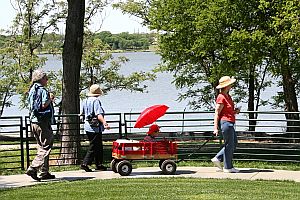Lower back pain is one of the most common musculoskeletal complaints. It’s also one of the most common reasons that people visit their doctor or chiropractor. An estimated 60-80 percent of the population will experience low back pain at some point in their lives. But luckily, exercise can help prevent or alleviate the condition, and a recent study has shown that it does not need to involve anything more complicated than walking briskly.
Dr. Michal Katz-Leurer and her colleague Ilana Shnayderman from Tel Aviv University conducted a study on 52 sedentary people aged 18-65 with chronic lower back pain. The volunteers were divided into two groups: the “walking” group and the “exercise” group. The walking group was instructed to walk for 20 minutes on a treadmill twice a week, switching to 40 minutes per session as their strength increased. The exercise group was assigned specific back strengthening exercises to be performed twice a week. Both groups carried out these activities for six weeks.
The researchers’ results, which were published in the journal Clinical Rehabilitation, found that significant improvements had been made in both groups, regardless of the type of exercise they had practiced. This is good news for people who do not have the equipment or budget to afford professional strength training classes. All it requires is getting out for a brisk walk. Dr. Katz-Leurer said that their study confirmed that walking is “as effective as treatment that could have been received in the clinic.”
The research shows that active walking (as opposed to simply strolling) engages the same muscles that are used with targeted exercise. The reason why you may find that your back hurts after a day at a museum or when browsing the shops is that walking slowly causes the spine and supporting muscles to be under constant pressure. The compressive pressure on the lower back when strolling is about two and a half times your body weight and the spine does not move much. However, even though the lower back experiences the same amount of compressive pressure when walking fast, there is a cyclical effect on the muscles supporting the back that relieves the static pressure, particularly if you swing your arms as you walk.
Dr. Katz-Leurer noted that a walking program encourages people to live a healthier lifestyle overall and that it can help to alleviate the aches and pains we experience as we age. She added that walking is a low-impact activity that lowers blood pressure, reduces stress, improves brain function and boosts the immune system. So take some time each week to get out for a brisk walk and it may improve your general health and significantly improve any chronic pain in your lower back.

